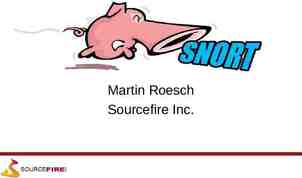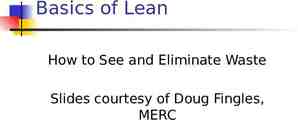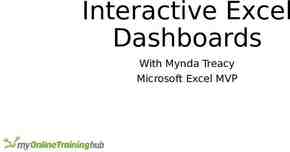LD033 Short-term sickness absence seminar November 2018 Short-term
42 Slides474.50 KB

LD033 Short-term sickness absence seminar November 2018 Short-term sickness absence seminar www.face2faceHR.com

This session focuses on how to manage short-term absenteeism effectively www.face2faceHR.com

Rights under employees’ employment contracts Employees’ rights, e.g. to pay during short-term sickness absence are determined by contract Employees’ obligations, e.g. notification of sickness absence is determined by contract/policies Become familiar with employer’s rules and apply consistently www.face2faceHR.com

Over to you These are common causes of frequent spells of shortterm absence. Can you think of any others? Underlying medical condition that flares up from time to time Family problems www.face2faceHR.com

Cause of absenteeism Be open minded about cause of absence Cause of absence may be outside employee’s control Understanding cause of absence important part of remedying it www.face2faceHR.com

Over to you These are workplace factors that might cause or exacerbate absence. Can you think of any others? Volume of work Unhappy working relationships www.face2faceHR.com

Possible impact of workplace factors on absenteeism Be alert to signals that employee may be experiencing workplace stress to the extent that he/she is not coping Medical certificates stating “stress”, “depression” or “anxiety” should put manager on notice www.face2faceHR.com

Discussing the problem with the employee (1) Be alert to frequent short-term Ask employee if anything in the workplace is causing or contributing to absence Be sympathetic and reassure employee of wish to support him/her www.face2faceHR.com absence

Discussing the problem with the employee (2) If identify workplace problem, remove or reduce the factor causing the problem, if possible If fail to support employee experiencing health problems due to workplace factors and he/she has a mental breakdown, employer could be liable in law www.face2faceHR.com

Monitoring short-term absences Managers can reduce frequency of short-term absences by taking positive steps to monitor and control absences www.face2faceHR.com

Initiating the procedure Have a procedure requiring employee to telephone named person, e.g. supervisor Use a form to record: date and time of call reason for absence how long employee expects to be absent www.face2faceHR.com

Return-to-work interviews Irrespective of length of absence, hold return-to-work interview on employee’s return: helps to deter casual absences Tell employee purpose of interview is to monitor absences and not part of disciplinary procedure Consider asking employee if he/she visited a GP, how he/she is feeling now and if can do anything to support him/her Do not ask intrusive questions but seek to establish cause of absence www.face2faceHR.com

Checklist for return-to-work interview Keep it informal Make it private and confidential Take it seriously Make it structured and factual Carry it out in a positive and supportive way Record it www.face2faceHR.com

Certification For any absences of up to one week, employee should complete self-certification form on return to work Manager should countersign form Form should require employee to write reason for absence, dates of absence and if doctor was consulted, rather than to tick boxes www.face2faceHR.com

Fit notes (1) Fit note has replaced sick note If employee is absent for eight days or more, he/she should obtain fit note from doctor Fit note states employee “not fit for work” or “fit for work” taking account of doctor’s specific advice www.face2faceHR.com

Fit notes (2) Purpose of fit note is to facilitate return to work by suggesting how employer could help employee return to work Doctor can highlight one of four options to facilitate return (or write in any other option): phased return amended job duties altered hours of work workplace adaptations www.face2faceHR.com

Fit notes (3) There is no legal obligation to comply with doctor’s recommendation Employee should agree before any changes are made If make changes agree how long they will last Take doctor’s suggestions seriously and consult employee Fit note could be starting point for discussions with employee www.face2faceHR.com

Absence reviews Where employee’s absence reached defined threshold (which should be set out in organisation’s absence procedure) review employee’s attendance www.face2faceHR.com

Checklist for reviewing absence (1) Examine employee’s attendance record to check facts Look for patterns Arrange meeting with employee to discuss absences Allow employee to be accompanied at meeting Seek to establish if any underlying cause of absences and, if there is, what action would alleviate situation Check if absences are work related and, if they are, remove/reduce cause www.face2faceHR.com

Checklist for reviewing absence (2) Agree reasonable targets for improving attendance Obtain employee’s commitment to meeting targets Inform employee that continuing high level of absence is unacceptable and if improvement not achieved formal action may be instigated Consider seeking medical advice www.face2faceHR.com

Looking for patterns When reviewing employee’s absences, determine if there is a pattern, e.g. frequent Monday absences If find pattern, speak to employee Do not throw accusations at employee Do not make assumptions State the facts and ask employee to explain them Speaking to employee may establish reason for absenteeism/deter further casual absences www.face2faceHR.com

Dos and don’ts Do say Don’t say I’ve noticed that six out of your 10 You’re always off on Mondays absences have been on Mondays Would you like to comment on that apparent pattern? Is there any reason why nearly all your absences have been in the final week of the month? Records show that you tend to be absent towards the end of your shift cycle - is there a problem we can help you with in relation to shift-working? www.face2faceHR.com - that’s very strange, don’t you think? I suppose you’ll have some excuse or other You always seem to be off when an important job has to be done - we can’t rely on you You are no use to us if you can’t cope with the shift cycle - we need you at work and not off sick

Employees with personal or family problems If absences are caused by family problems, be supportive while explaining that frequent absences are unacceptable Strike a balance between supporting employee and getting the work done Do not need to put up with frequent absences indefinitely Seek agreement as to timescale for improvement www.face2faceHR.com

Suspicion that reasons given for absences not genuine If reasonable grounds to believe reasons given for absences not genuine, put doubts to employee Do not make wild accusations Put matter to employee as statement of fact followed by general question www.face2faceHR.com

Instigating formal action Support employees who are absent for genuine reasons, but ensure work is done efficiently If informal measures have not led to improvement, may need to instigate formal measures Formal measures are appropriate where absences excessive or causing serious disruption, or where attendance not improved www.face2faceHR.com

Checklist for formal action (1) Check with HR what the appropriate procedure is. This is a typical procedure: Send employee a letter setting out absence dates and inviting him/her to a meeting Letter should state that a formal warning may result and inform employee of right to bring colleague/trade union representative At meeting explain absences have reached unsatisfactory level and reasons why www.face2faceHR.com

Checklist for formal action (2) Give employee opportunity to explain absences Decide after meeting if should issue formal warning Set down date for further review If warning issued, allow right of appeal to more senior person www.face2faceHR.com

Written warnings (1) A written warning should: state the problem from the employer’s perspective; quote the number of absences and total number of days’ absence over a defined period; state it is a written warning that forms part of the employer’s formal procedure; set out the required improvement in attendance and timescale for improvement; www.face2faceHR.com

Written warnings (2) state when the matter will be reviewed; state how long the warning will remain “live”; make clear if attendance does not improve as required, further formal action will be taken; and state the employee may appeal against the warning, and to whom to direct the appeal. www.face2faceHR.com

Fair dismissal on grounds of unsatisfactory attendance (1) If, following a series of warnings, attendance does not improved, may be able to dismiss employee fairly Two to three warnings usual Dismissal should not be undertaken lightly and should be last resort www.face2faceHR.com

Fair dismissal on grounds of unsatisfactory attendance (2) Reason for dismissal is “lack of “some other substantial reason” Both reasons are potentially fair reasons for dismissal Level of absence must be sufficient to justify dismissal and employer must act reasonably in dismissing Subject to some exceptions, to bring unfair dismissal claim, usual period of continuous service to bring unfair dismissal complaint required www.face2faceHR.com capability” or

Keeping records Keep records of all absences and discussions with employees about absences Keep self-certificates and medical certificates Hold records confidentially www.face2faceHR.com

Benefits of absence management (1) Active management of absences allows manager to: identify cause(s) of absences, enabling manager to deal with them; support the employee; deter casual absences; establish if attendance is likely to improve; www.face2faceHR.com

Benefits of absence management (2) identify any workplace problems; improve morale and motivation; and reduce absenteeism and costs and improve productivity. www.face2faceHR.com

Q: At what point should management of short-term sickness absence start? a) When at least one employee has had 12 days' absence in a 12-month period b) When an employee telephones to report that he or she is sick and will not be attending work c) When the manager begins to notice an absence-related drop in efficiency d) When other employees start to complain about a particular employee's attendance www.face2faceHR.com

Q: At what point should management of short-term sickness absence start? a) When at least one employee has had 12 days' absence in a 12-month period b) When an employee telephones to report that he or she is sick and will not be attending work c) When the manager begins to notice an absence-related drop in efficiency d) When other employees start to complain about a particular employee's attendance www.face2faceHR.com

Q: In what circumstances should a return-to-work interview be carried out? a) Where an employee returning to work after a period of sickness absence requests one b) Where an employee returns to work after a period of at least seven days' absence c) Where an employee returns to work after any period of absence d) Where the line manager feels that such an interview would be appropriate www.face2faceHR.com

Q: In what circumstances should a return-to-work interview be carried out? a) Where an employee returning to work after a period of sickness absence requests one b) Where an employee returns to work after a period of at least seven days' absence c) Where an employee returns to work after any period of absence d) Where the line manager feels that such an interview would be appropriate www.face2faceHR.com

Q: Michael notices that Sarah always seems to be off sick when the monthly productivity reports are due. Which behaviour would be appropriate in the circumstances? a) Michael states what he has noticed and asks if Sarah can explain the pattern b) Michael avoids mentioning the issue as it would be inappropriate to do so c) Michael points out what he has noticed and suggests that Sarah is shirking her responsibilities d) Michael refrains from mentioning the issue as he's sure the problem will sort itself out in time www.face2faceHR.com

Q: Michael notices that Sarah always seems to be off sick when the monthly productivity reports are due. Which behaviour would be appropriate in the circumstances? a) Michael states what he has noticed and asks if Sarah can explain the pattern b) Michael avoids mentioning the issue as it would be inappropriate to do so c) Michael points out what he has noticed and suggests that Sarah is shirking her responsibilities d) Michael refrains from mentioning the issue as he's sure the problem will sort itself out in time www.face2faceHR.com

Q: Nigel admits that he cannot cope with his volume of work and that this is contributing to his frequent absence. What would be an appropriate response from his line manager Sue? a) Sue refuses to look at Nigel's volume of work. Other people in the same role are coping, so why can't he? b) Sue takes the view that if Nigel cannot cope he will eventually resign and the problem will be solved c) Sue warns Nigel that if his attendance doesn't improve he is liable to be dismissed d) Having identified the problem, Sue decides on an immediate review of Nigel's workload www.face2faceHR.com

Q: Nigel admits that he cannot cope with his volume of work and that this is contributing to his frequent absence. What would be an appropriate response from his line manager Sue? a) Sue refuses to look at Nigel's volume of work. Other people in the same role are coping, so why can't he? b) Sue takes the view that if Nigel cannot cope he will eventually resign and the problem will be solved c) Sue warns Nigel that if his attendance doesn't improve he is liable to be dismissed d) Having identified the problem, Sue decides on an immediate review of Nigel's workload www.face2faceHR.com






